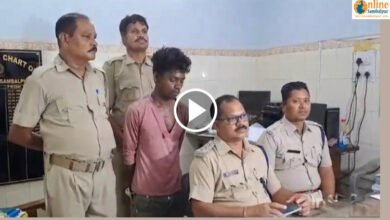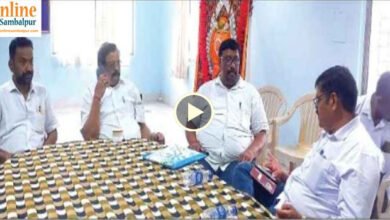Sambalpur: 95% Distribution, 45% Usage of Mosquito Nets at Home; Interesting Facts from Vimsar Doctors’ Survey
Heat map of the area showing the surveyed clusters in Burla, Sambalpur, Odisha

Sambalpur: To improve the effectiveness of malaria control programs, the state and federal governments distributed long-lasting insecticide-treated nets (LLIN) throughout the state. This initiative aimed to benefit both rural and urban communities. The government has been successful in distributing these nets, but they are not widely used. Many people do not use their nets after receiving them and instead store them at home. According to a survey, only about 45% of people in settlements use nets. The Springer Nature Journal published this research report by a team of five doctors from Vimsar. Drs. Sanjeeb Mishra, Soumya Patra, Ashok Panigrahi, Subrat Pradhan, and Gaurahari Pradhan make up the research team.
The doctors interviewed 2,541 people from 516 families in Burla, both in the city and in the settlements. It was discovered that 942 people in these families rarely used bed nets. The survey found that 95% of families had received the nets. Participants in the survey, aged 18 to 90, explained why they did not use the nets, pointing out discomfort from the heat and a feeling of being trapped inside the net. This shows that, while the government distributed nets with health considerations in mind, usage was not adequately monitored, resulting in the program’s partial failure. It is suggested that lack of supervision from the district administration and the health department is to blame for this inefficiency, resulting in the wastage of crores of rupees.
Online Sambalpur is now on WhatsApp!
Join us for the latest news updates delivered directly to your WhatsApp
Dr. Mishra stated that their research team initially focused on Burla town. They created a report advising on proper usage and identifying issues with non-use. Mosquito nets can help prevent not only malaria but also dengue fever and filariasis. Disease prevention measures are implemented, including the distribution of nets, which carries significant costs. Unfortunately, people are not using the nets, which is regrettable.
The administration has implemented awareness campaigns in villages, regular DDT spraying, rapid testing in malaria-affected areas, and measures to prevent mosquito breeding in stagnant water. Maa members of Self-help groups, Asha workers, and village welfare committee members all contribute significantly to encouraging net usage. The administration has implemented awareness campaigns in villages, regular DDT spraying, rapid testing in malaria-affected areas, and measures to prevent mosquito breeding in stagnant water. Self-help groups, ‘Maa’ members, social workers, and village welfare committee members all contribute significantly to encouraging internet use. DDT spraying and LLIN monitoring are ongoing. Malaria information is provided through ‘health points’ located in remote areas. These efforts have contributed to malaria control in the district, with the district administration reporting a decrease in malaria-prone areas.
Read the full research article here.
Long-Lasting Insecticidal Net Coverage and Utilization in Burla Town of Sambalpur District: A Cross-Sectional Study






